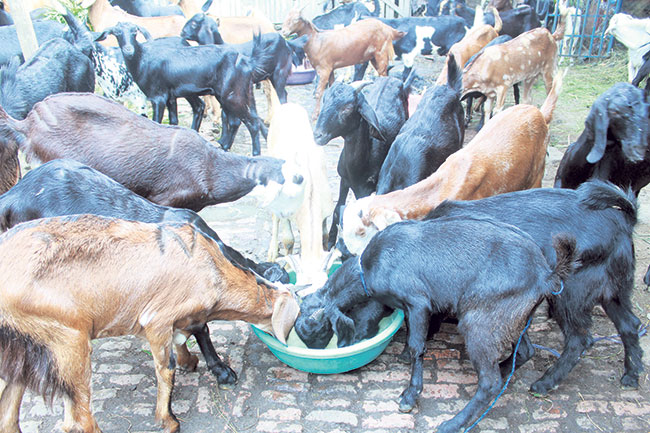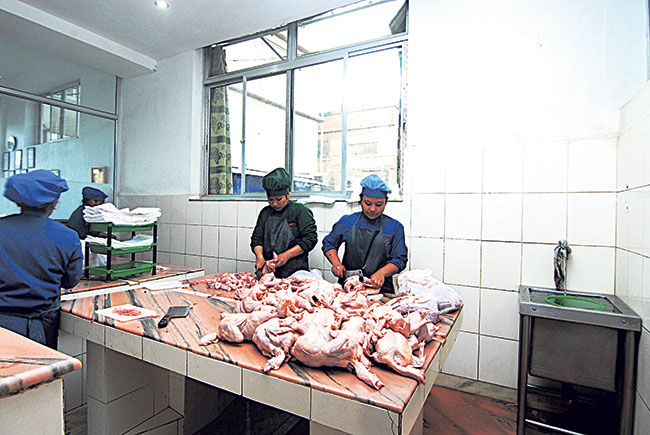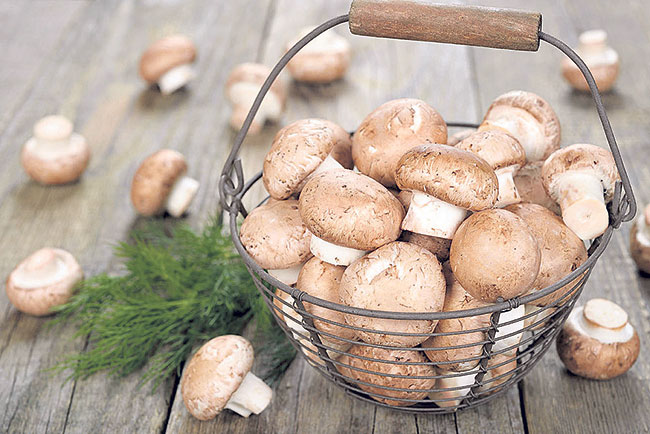KATHMANDU, Sept 24: When we think of Dashain, we remember flowers blooming, kites flying, planting jamara (barley seeds) and foreheads full of red tika. For most Nepalis, any festival, gathering or celebration seems incomplete without meat items and Dashain is the time when meat items are priority.
During the Dashain festival, varieties of mutton, pork and chicken are a few favorites. While meat is a common preference for non-vegetarians, vegetarians also have a variety of choices for the festival. With increasing numbers of people turning vegetarian due to health as well as other personal reasons, the demand for healthy veg foods is also growing.
Massive influx of foreign goats
 When it comes to preparing a list of popular foods during Dashain, the much preferred mutton undoubtedly tops the list. As a part of the Hindu rituals, tons of goats are imported especially for the festival in order to be sacrificed on the day of Astami and Nawami.
When it comes to preparing a list of popular foods during Dashain, the much preferred mutton undoubtedly tops the list. As a part of the Hindu rituals, tons of goats are imported especially for the festival in order to be sacrificed on the day of Astami and Nawami.
Chaupaya Kharidbikri Sewa Sangh situated in Brikuti Mandap, Kathmandu currently has about 200 goats for sale. However, the sale of goat increases to as high as 7,000 after Ghatasthapana. Three types of goats, ie Billy goat (bokaa), wether (khashi), Himalayan goat (chyangra) and sheep on sale are barely local.
“More than 85 percent of goats are imported from India, making Nepali sellers and consumers highly dependent on the Indian market. The Indian market determines our trading and income generation,” said Santosh Bahadur Khatri, vice-chair of Chaupaya Kharid Bikri Sewa Sangh.
Like every year, the price of goats that are currently sold at Rs 485 per kg is expected to rise during Dashain, depending on their supply. If the supply happens to be less than the demand, the prices of goats will definitely increase.
The Himalayan goats and sheep that come from Mustang and China are comparatively less in demand than the two other goats.
The local goats are brought to Kathmandu from Khotang, Bhojpur, Gaighat, Katahari, Dang, Salyan, Rukum and Rolpa. Moreover, talking about the production of goats within the country through maximum breeding, Khatri confirmed that scarce investment has lowered the hopes of local breeding and increased the dependency on Indian markets.
“The potential areas where goat breeding is possible lack government’s concern. With our skills on agriculture, we can surely boost the local productivity of goats,” added Khatri.
White meat for healthier life
 There is another chunk of population that drop by shops to shops to get the white meat. As red meat is considered fatty and comparatively harmful when consumed in large amounts, many people these days opt for white meat.
There is another chunk of population that drop by shops to shops to get the white meat. As red meat is considered fatty and comparatively harmful when consumed in large amounts, many people these days opt for white meat.
Be it red or white meat, you could fall sick in the middle of the celebrations if the produce is contaminated or stale. So, there are several factors that should be evaluated before one buys meat.
When opting for white meat, one should consider its quality from the very start of the process. The quality and taste of chicken varies on the basis of how chickens are reared in poultry farms and the slaughtering process.
“We rear the chicks in an environment-controlled farm. When adult chickens are brought to our factory, they are tested for any deformities or diseases and slaughtered in a painless way. First, the chickens are stunned, scalded, while their feathers and two layers of skin are peeled off. Then their body temperature is lowered to 10°C,” said Sakchyam Ghimire director of Valley Cold Store, Nayabazar.
“The slaughtered chicken is further cut for different items -- wings, breasts, legs, vacuum packed -- and taken for blast chilling to decrease the temperature to below -20°C,” Sakchyam said.
One should always check how the meat is packed or being sold before consuming it. Many of the slaughterhouses don't meet the government-set operational and ethical standards. The places stink and the process is ruthless.
It is also essential that you know if the slaughterhouses maintain the standards that are necessary to conduct the slaughter and sell meat. Valley Cold Store, which was established in 1981 AD, has a HALAL certification and ISO 22000:2005.
It is also common among people to think that only chicken cut in front of them are fresh and hygienic, but this is one of the many misconceptions that people have held on to for long. “They believe cold chicken is old chicken. In fact, lower the temperature lesser the chances of its decomposition and bacterial infection. But even with efforts, we have not been able to change this thought process,” Sakchyam added.
Also, the utensils used such as blades in automated machines or knifes can contaminate the chicken. “Hygiene, both for the chicken and our staff, is essential for us as contamination might occur at many control points. We have regular cleaning and testing processes (swab test, listeria, ecoli) where we make sure that the workplace, machines and our staff are all clean,” added Sakchyam.
Dashain Delights for Vegetarians
 With a variety of tongue-tickling foods for the non-vegetarians, Dashain also comes with many appetizing home-made vegetarian meals. Although non-vegetarians outnumber vegetarians, the number of veg-restaurants has been increasing.
With a variety of tongue-tickling foods for the non-vegetarians, Dashain also comes with many appetizing home-made vegetarian meals. Although non-vegetarians outnumber vegetarians, the number of veg-restaurants has been increasing.
Twenty-five-year-old Chhyogyi Limbu of Mahankal, who has been vegan for 10 years now, finds an easy access to satiate her appetite through the veg-resturants whenever she wants to have a her choice of foods.
Vegetable vendor, Dhanawari Tamang, also explained that though vegetables are always in demand, but with Dashain approaching, she is excited about making profits. Her cart contains 25 types of vegetable, of which cauliflower and mushroom are much preferred by people during festivals and especial occasions.


Leave A Comment